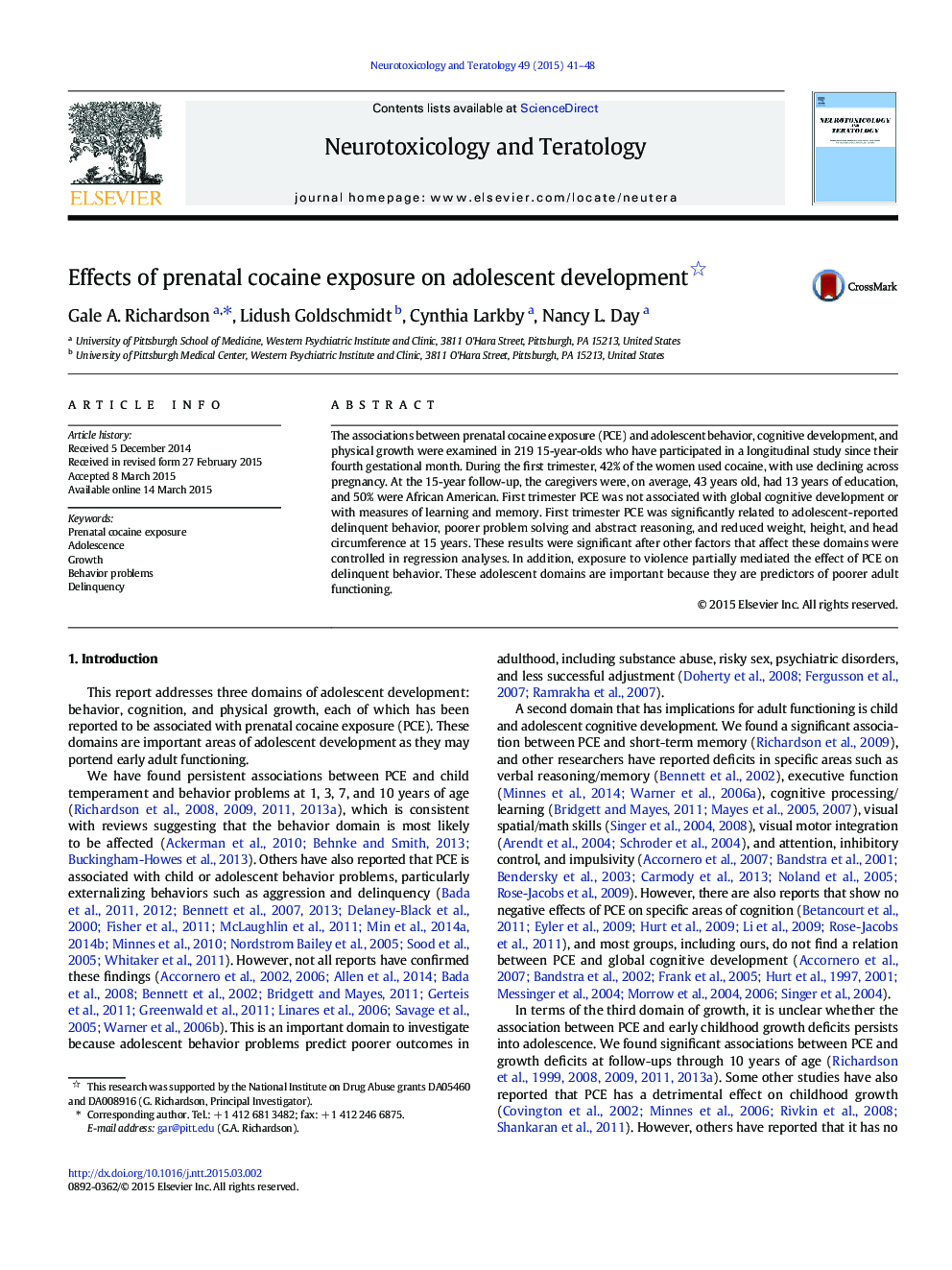| Article ID | Journal | Published Year | Pages | File Type |
|---|---|---|---|---|
| 5855566 | Neurotoxicology and Teratology | 2015 | 8 Pages |
â¢The association between prenatal cocaine exposure (PCE) and adolescent development has not been well-studied.â¢Offspring and their mothers were followed from the fourth gestational month through 15 years of age.â¢PCE was associated with adolescent self-reported delinquent behavior, poorer problem solving and abstract reasoning, and physical growth, controlling for other predictors of the outcomes.â¢Adolescent outcomes are important because they are predictors of adult functioning.
The associations between prenatal cocaine exposure (PCE) and adolescent behavior, cognitive development, and physical growth were examined in 219 15-year-olds who have participated in a longitudinal study since their fourth gestational month. During the first trimester, 42% of the women used cocaine, with use declining across pregnancy. At the 15-year follow-up, the caregivers were, on average, 43Â years old, had 13Â years of education, and 50% were African American. First trimester PCE was not associated with global cognitive development or with measures of learning and memory. First trimester PCE was significantly related to adolescent-reported delinquent behavior, poorer problem solving and abstract reasoning, and reduced weight, height, and head circumference at 15Â years. These results were significant after other factors that affect these domains were controlled in regression analyses. In addition, exposure to violence partially mediated the effect of PCE on delinquent behavior. These adolescent domains are important because they are predictors of poorer adult functioning.
